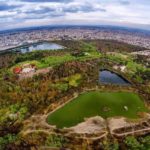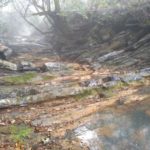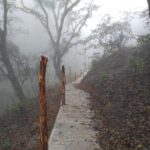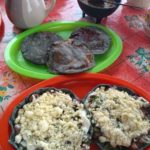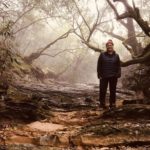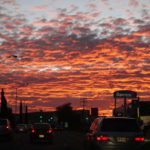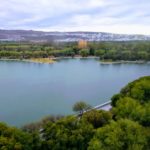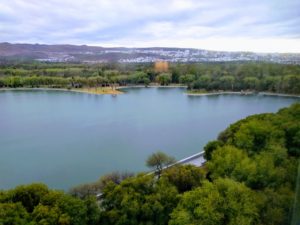San Luis Potosí: The Most Underrated State of Mexico
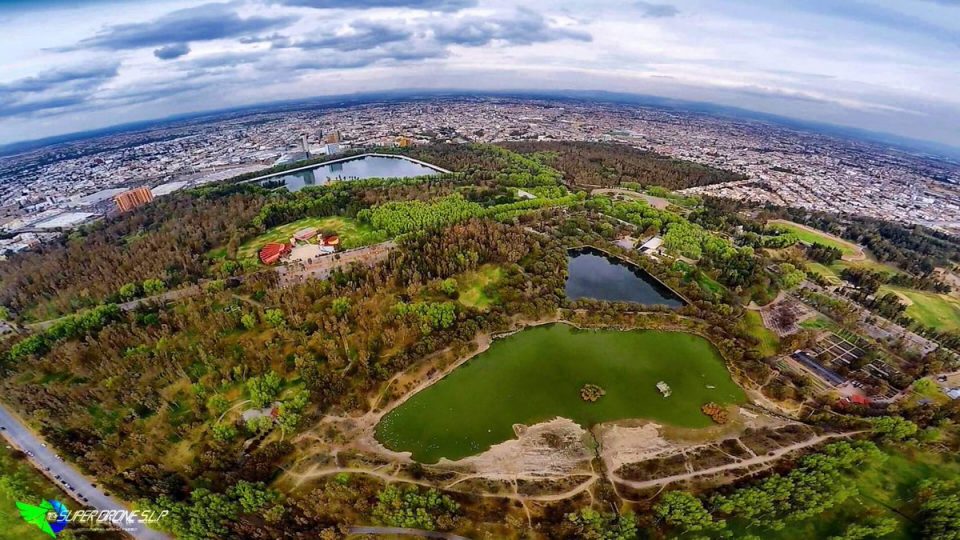
I write this post in a mad hurry in my final few days in Mexico before my big trip to Colombia. I have been living a somewhat half-life here since my bike accident, recovering my elbow and attempting to make a sliver of money to keep my travel dreams alive. What I have neglected to do in this time is experience much of the beauty that this central-Mexican desert state has to offer. So i the past few weeks, I have been taking various day trips to the regional areas of the state to give you all an update as to some of the delights of a place that I have never heard spoken about outside of Mexico.
Now I may be biased because my Mexican love does work for a destination management company that specialises in all things San Luis Potosí, but this state is seriously underpromoted and underrated.
San Luis Potosí is divided into four regional areas based on the variances in climate and terrain: Center (Centro), Highlands (Altiplano), Middle (Zona Media) and Huasteca
In this post I’ll take you through the Center and my experiences there in the past four months. I’ve included links to my albums because I’m lazy, time-poor and it’s simply too hard to choose which photos are the best, so please give the page a few minutes to load all the images.
Center (Centro)
The capital has been my main haunt for the past few months. The city was formed by the Spanish in the 1600s after discovering silver in the hills which surround the centre and later moving to lower ground to a source of water. Although I miss the ocean, it is amazing to wake up and go for my early morning walk with a 360 degree view of hills all around. The city serves in a largely industrial capacity, being one of the main hubs for automotive fabrication in Mexico, although it was badly hit when the US upped taxes on offshore-manufactured Ford, of which the main factory was located in SLP. The centre of town is quaint and very Spanish-influenced, with a bunch of architecture that is often found in Spanish-colonialised Mexican towns: cathedrals, small cobbles laneways, churches, stone Town Hall and Palace, and more churches.
In terms of things to do, it is not the “place to be” if you are a city girl like me who loves to go out to festivals, lie in lush green parks and find meet-up and cultural groups to make new friends. There is no real expat community, with the majority of foreigners coming from the US or Germany to work with the various factories. That being said, there a few pockets of beauty and wonder that you need to explore.
Leonora Carrington Museum
In the centre of town, this incredible stone building has a history. Now housing the works and life story of surrealist artist Leonora Carrington, a British-born Mexican artist, surrealist painter, and novelist. She escaped to the Americas during WWII and lived most of her adult life in Mexico. She was a founding member of the Women’s Liberation Movement in Mexico during the 1970s. I’m not much of an art connoisseur, especially not of surrealist art, so what really pulled my interest was the fact that each room featuring her sketches and sculptures were once prison cells, only some 20 years ago. Walking through the grounds, the cell doors backed with old torn posters of female singers and actors, now house music rehearsals and art murals of the students attending the now School of Fine Arts, also at home within these stone walls.
Tangamanga Park
Dubbed at the Central Park of San Luis Potosi, Tangamanga dominates the map and is the perfect place to spend a weekend with the family. The park hosts various food truck family-friendly events on the weekends, and is the common place for all exercise buffs to frequent to run around the enormous man-made lake. It is my little bit of water-filled blue paradise within an otherwise dry and arid desert city. You can easily spend several days here exploring the Museum, free Zoo, Conservatory or just soak up the sun.
Hills of San Pedro
Founded as the first town in the centre of the state, San Pedro was settled by the Spaniards and set up as a silver mine. Although the mine is now closed and the town is a home to a few locals, San Pedro is frequented by many city dwellers on the weekends. I came up for the day and picked up a few beautiful silver pieces from silver shop that is still open, but I will be back to take a 1 or 3 hour hike in the hills.
Valley of the Ghosts (Valle de las Fantasmas)
You can’t keep me happy for too long without taking me either diving or hiking, so one very cool morning in January we headed up the foothills on a hiking trip. The frosty windy roads were enough to make me cower in the backseat with my eyes shut, but we made it in one piece and enjoyed getting back to nature in what feels like an extremely wild and untouched part of Mexico, peering through the fog to reveal a mysterious pathway that lead to a stunning rocky river. We enjoyed some hearty local grub afterwards with black maize gorditas (corn torillas cut and stuffed with cheese, meat or other good stuff) cooked over a wood-fire grill. We fed four of us for $15.
San Jose Dam (Presa de San Jose)
Consider yourself superstitious? Well, the Mexicans certainly are, even my very level-headed man gets nervous at this place. The city’s main water source is a popular weekend destination for local walkers and families, however it has a much darker side. Locals swear that the dam is a well-known dumping ground for dead bodies, which justifies exactly why we don’t open our mouth in the shower and why we only consume bottled water. All Potosi locals tell the haunted tale of the construction of the dam. In 1894, the Spaniards kidnapped 21 young children aged from 10 and under and threw them into the foundations before they laid the concrete. The Spaniards were a superstitious bunch, and they believed that the spirits of these children would then warn the townspeople if the dam was about to flood. One such warning was received in the 1900s, with several citizens hearing warnings from various voices. However the voices were ignored, only to be proven right the next day as the dam flooded, killing several people. Since this time, there have been thousands of reports from people hearing children laughing and seeing the swing sets moving, despite there being no breeze.
Being a very devour practicing atheist and proud skeptic, it is always a challenge to take the people who tell me these stories seriously, but standing in front of these concrete blocks knowing for a fact that there are the concrete-preserved remains of 21 children is a heavy thing to swallow, and even a skeptic can waiver slightly when you are in a country with hundreds of years more history and a population of people who all believe in these energies. If you are interested and don’t mind that it’s in Spanish, check out this film that was shot only a few months ago of a team who visited this extranormal site after hours and who experienced some very saddening and evil forces as they stood right where I also did the day I visited.
Armadillo de Los Infantes
Named after one of the founding families that took over after the Mexican revolution in the 1700s and one of the region’s most sighted animals, Armadillo is a Pueblo Magico (Magic Town) with a real local charm. The Spanish architecture of the cobbled laneways and large-walled cathedral in the town centre is a constant reminder of their colonial early days, but the Mexicans have given the town their own sense of style, colouring those stone walls with their unique local-town style. We wandered through the tranquil plaza lapping up the best handmade ice cream I’ve ever tasted. We sat calmly sipping our beers chatting with a local hotel owner who told us that the staff are not ring-in tourist workers from other states, but born-and-bred locals with a strong sense of pride for their town. I was thrilled to walk away with a bag of the owner’s own spicy chilli Kik-a-pu sauce, which as a chill lover, lasted less than 48 hours in my kitchen.
Some worthwhile eats:
- Molletes (a Spanish-style open-faced sandwich) at La Gozosa in Pozos, a local neighbourhood with great restaurants
- Late night tacos and incredible beef consume (soup) at Don Juanito, a chain restaurant found in various spots around the city.
- For a break on the street-eats and want a night of luxury, the award-winning Restaurant Toneles in the city centre has incredible wine-pairing knowledge with unique poblano-inspired dishes.
- La Oruga Rooftop bar, for some great wine and artisanal beer with an inner-city feel. I felt like I was back in Melbourne here.
- For a truly Mexican experience with Mariachi, tequila and all, you can’t go past La Palapa.
The charming and historic city-centre echoes of its colonial and mining history. As a blonde female traveller I feel very safe wandering through the ice-creameries and plazas of the centre, despite the long stares I may get in the more local suburbs. The stunning pink sunsets over the hills never cease to amaze me every evening.
This is the first time I have felt like I am living as an expat overseas rather than just travelling, and every now and then I have to sit back, take a deep breath and realise that I am actually doing it: I am over one year into my journey and I am living overseas, exactly as I wanted. Granted that it’s certainly not anywhere I expected, but I am so glad that life has brought me to a place that not many people see, and rather than sipping cocktails on the beach, chewing through my money and leaving within a few months, I have lengthened my time here and seen more of the real Mexico than I could have hoped for.
Vacation time!
Tomorrow I leave for Playa del Carmen in Mexico’s Riviera Maya, where I was staying during my Divemaster course. My time diving was cut unpleasantly short after my bicycle accident so after a few months slumming it in the desert, I’m headed back to beachside bliss to get in some more diving before heading to Colombia next week.
FOLLOW ME!
I’m going to be active on Instagram and Facebook so please follow me on either or both channels for a more up-to date action rather than waiting for my blog posts:

